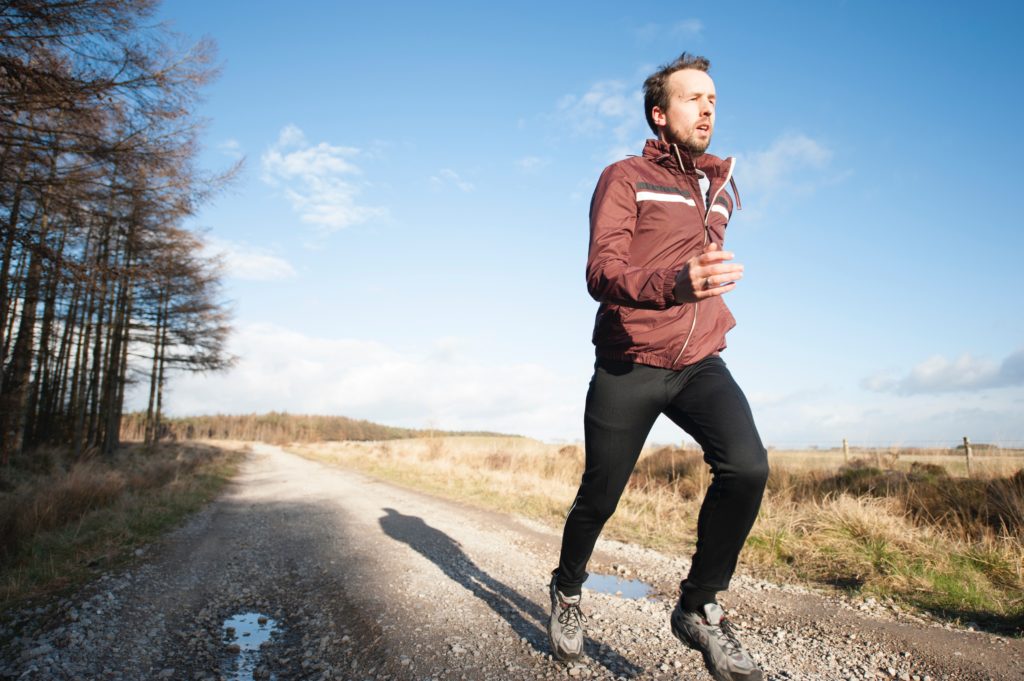Osteitis pubis (OP) is a common overuse injury characterised by inflammation and tissue damage to the pelvis at the pubic symphysis. Can include surrounding structures including the pubic rami, cartilage, musculotendinous and ligamentous pelvic structures (Batt et al, 1995), resulting in groin pain.
The two halves of the pelvis are joined by a disc of cartilage at the front of the body, forming the pubic symphysis.
Several muscles of the abdomen and groin attach at this point and contract quite forcefully during some exercise, causing them to pull at their insertion into the bone.
Repeated stress placed on the pubic symphysis can lead to inflammation and irritation and a reduction of hip range of motion (LeBlanc and LeBlanc, 2003).
Osteitis pubis is predominantly caused by repetitive contraction of the muscles that attach to the pubic symphysis, resulting in excessive stress on this joint. This causes trauma to the joint and tissues surrounding it.
Sports or activities involving prolonged running, kicking, rapid direction change or excessive abdominal muscle use, are commonly associated with development of Osteitis Pubis.
Even with these sports a sudden change in load such as preseason training can be an a key factor contributing to the development of OP.

Causes of Osteitis Pubis
There are a number of factors that could increase a person’s risk of developing Osteitis Pubis, including:

- Muscular imbalances in the hip region and, in particular, weakness of the core muscles, gluteals and adductors (Progression of gentle isometric through to loaded isotonic strengthening) or
- Overactivity or tightness of the hip flexors, hamstrings or abdominal muscles.
- Biomechanical abnormalities, such as flat feet, poor posture and/or poor walking or running mechanics.
- Exercising on hard or uneven surfaces.
- Poor footwear choices or even that special pair of runners that have done their duty need to be changed.
- Inadequate warm up and cool down.
- Rapid increase in training intensity, duration or frequency.
- Beginning an exercise program after a lay off
- Pre-existing history: Insufficient rehabilitation following a groin muscle (adductor) injury.
- Leg length differences.
Signs and Symptoms
- Pain and tenderness in the groin region that may vary from a dull ache to a sharp pain.
- Pain most commonly located in the front and centre of the pubic bone.
- Generally gradual onset, even during exercise, but can ease with rest.
- Difficulty or aggravation of pain with standing on one leg.
- Development of pain with contraction of certain muscles, particularly the hip adductors (inner thigh muscles) as with squeezing the legs together.
- Aggravation of pain with activities such as running, kicking or sit-ups.
- Altered walking pattern or a limp.
- Sporting performance compromised due to difficulty with running, kicking and changing direction.


Physiotherapy Treatment for Osteitis Pubis
Physiotherapy treatment for Osteitis Pubis should be commenced as early as possible and is aimed at reducing pain symptoms and inflammation. Correcting any underlying abnormalities and achieving a gradual return to full activity.
Treatment can assist in ensuring a faster recovery and the best outcome and may include:
- Rest from aggravating activities
- Ice or heat
- Manual techniques, including massage, dry needling and joint mobilisation to restore range of movement in the hip, lower back and sacral joints.
- Ultrasound or electrotherapy
- Development and progression of a specialised home exercise program aimed at improving core stability, strengthening weak muscles (particularly hip adductors and gluteals) and stretching tight muscles.
- Correction of underlying biomechanical abnormalities
- Education and advice regarding activity modification, gradual return to activity when appropriate and correction of technique.
A gradual return to sport and slow progression is essential in avoiding further overload and recurrence of injury. Premature return to sport is the most common reason for poor long-term outcome.
It can take 3-4 months of appropriate rehabilitation before a full return to sport is achieved and possibly longer if the condition is left untreated. However there are more long term.
Research on return to sport after Osteitis Pubis injury.
Whilst this is by no means a recipe for you as a patient, it should serve as an indicator of the components of a successful rehabilitation program. In this small case series (n=4) all players returned to play at a mean time of 13 weeks.
The results of this study mirrored the overall findings of Choi et al (2011) who found that the mean return to play for all patients undergoing conservative management was 9.55 weeks.
NB: A cornerstone of successful conservative osteitis pubis treatment will be addressing biomechanical and functional deviations at both the hip and lumbosacral complex, therefore these regions should be appropriately assessed and treated (Wollin and Lovell, 2006).
The discussion regarding treatment decisions is guided by the systematic review by Choi et al (2011). Whilst they searched for the best available evidence, they were unable to identify any RCTs regarding treatment decisions for osteitis pubis. Therefore, the following recommendations are based on clinical experience and case studies/series. So for our Brisbane patients it is case by case management.
If you are suffering from sharp aches and pain in the pelvis, Book an appointment to see our experienced physiotherapist at Pivotal Motion. Book an appointment online or call us today on 07 3352 5116.

